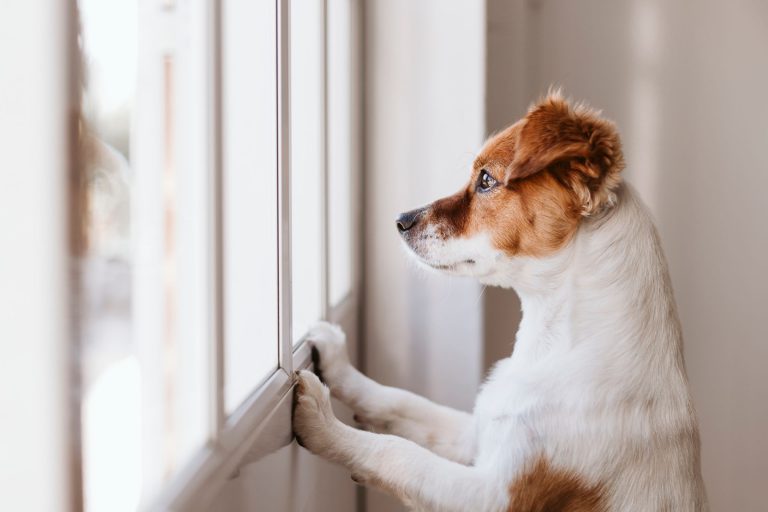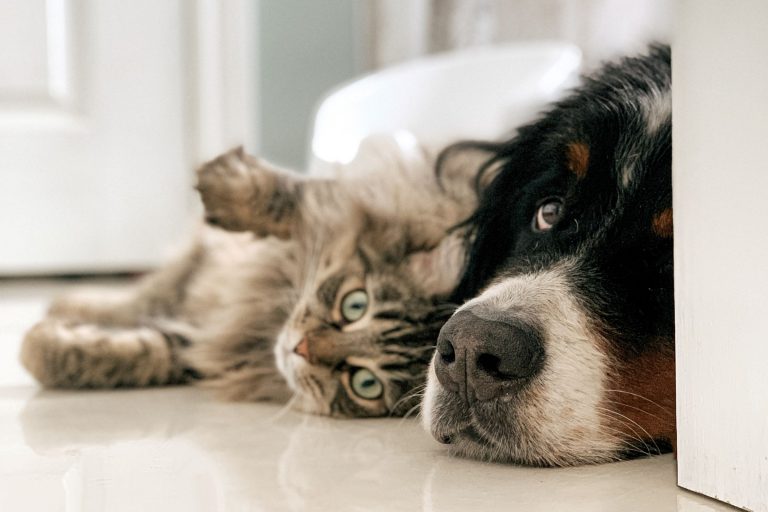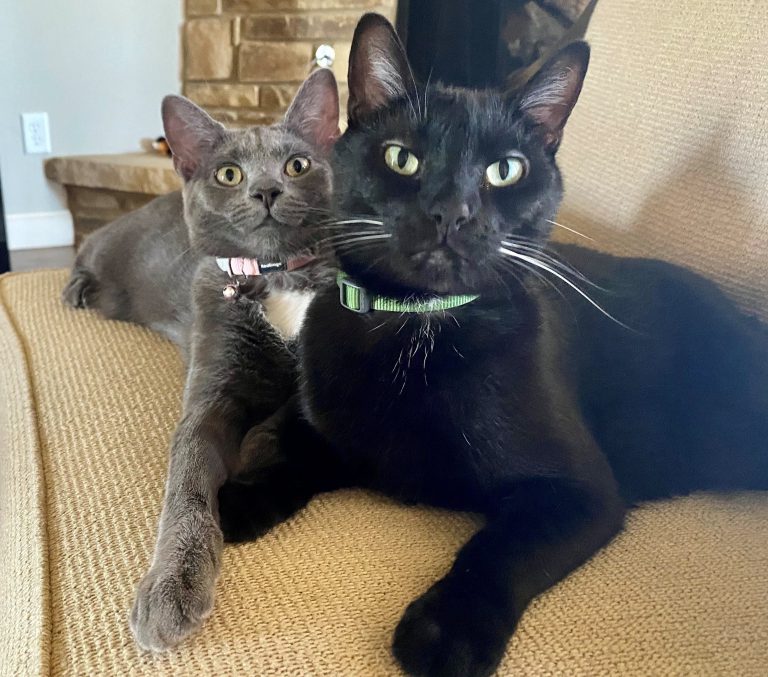Most pets have been living their best lives throughout the pandemic, but that is all about to change. As you make plans for your eventual return to the office, part of those plans should be preparing your pet for your return to the office. it’s essential to think about how it will impact all of your family members, even the furry ones. Veterinarians and animal behavioral specialists worry that ‘the great return’ could trigger a surge in separation anxiety, especially amongst pets adopted during quarantine and have never experienced life with you outside of these unique circumstances.1
Separation anxiety in dogs is a common behavior disorder worldwide. Twenty to 40 percent of dogs presented to veterinary behavioral specialists suffered from this disorder, which was pre-pandemic.2
Do you know how to calm a dog down? Is cat anxiety a real thing? Should you consider leaving your dog in a crate while at work? Read on to find out!
Separation anxiety in dogs
Separation anxiety in dogs is a cry for help, and the distress can be taxing on the animal’s wellbeing. Dogs that suffer from separation anxiety become anxious or emotionally distressed when separated from ‘their’ humans.
“When a dog is experiencing separation anxiety, it is quite similar to a panic attack in a human. A human, for example, with a fear of heights, placed on top of a tall building, might exhibit sweaty palms, dry mouth, and fast heart rate. In the same way, every time a dog who has separation anxiety is left alone, their bodies are flooded with the same stress hormones.”~ Tina Flores, KPA-CTP, Certified Separation Anxiety Trainer (CSAT)
Dogs may show signs of separation anxiety, such as:3
- Increased barking or whining
- Licking that causes fur loss or raw skin
- Chewing or ruining items in your home
- Urinating or pooping where they shouldn’t
- Refusing treats or being rough taking treats
- Wide eyes and big pupils
- Furrowed brow with ears down or to the side
- Pacing
- Panting when they’re not hot
- Shaking, sometimes shaking off like they’re wet
- Being overly excited when you return home
- Aggression

“When a dog is experiencing separation anxiety, it is quite similar to a panic attack in a human. A human, for example, with a fear of heights, placed on top of a tall building, might exhibit sweaty palms, dry mouth, and fast heart rate. In the same way, every time a dog who has separation anxiety is left alone, their bodies are flooded with the same stress hormones.”
TIna Flores, KPA-CTP, Certified Separation Anxiety Trainer (CSAT)
Cat anxiety – is it real?
Y-E-S! Just because cats aren’t typically as loving and affectionate as dogs, it doesn’t mean that they won’t miss you when you return to the office. A 2019 study showed that cats living with humans have similar attachment styles to pet parents as dogs. Specifically, 64% of the cats evaluated were securely attached to their humans. These cats showed less stress when near their caregivers.4
Signs of separation anxiety in cats can include:5
- Increased meowing
- Wide eyes and big pupils
- Holding whiskers flat against their cheeks or far forward
- Licking or grooming that causes fur loss
- Moving away from you or trying to escape
- Breathing quickly without any exercise
- Holding their tail close to their body, staying low, or swishing their tail
- Urinating or pooping outside their litter box
- Being more affectionate than usual
Consider a home monitor
We humans could easily overlook symptoms of cat anxiety and separation anxiety in dogs. For example, your dog or cat might pace nonstop when you leave them alone which is not as apparent as chewed furniture or uncontrollable howling. A truly content pet should be able to relax while you are gone.
If you suspect that your pet might be suffering from separation anxiety, or if you just want to spy on them when you return to the office, consider buying a home monitor to see what they are up to. There are a ton of pet cams that come in all different price ranges.
It’s important to note that symptoms of cat anxiety and separation anxiety in dogs can overlap with symptoms of medical conditions. A home monitor can help you pinpoint exactly when the symptoms start, which can help identify the problem. For example, if the symptoms start once your pet is left alone, that could point to separation anxiety in dogs. But if the separation anxiety symptoms remain consistent regardless of whether or not you are with your pet, that could point to a medical problem, and you should seek medical care immediately.

How to calm a dog down
When preparing your dog for your return to the office, the goal is to resolve or minimize their underlying stress by teaching them to enjoy or tolerate being left alone. Counterconditioning is a treatment process that changes an animal’s fearful, anxious or aggressive reaction to a pleasant, relaxed one instead. It’s done by associating the situation with something your pet loves. For pets with separation anxiety, counterconditioning focuses on developing an association between being alone and good things.6
You can try to decrease separation anxiety in dogs by implementing consistent routines and increasing your pet’s physical exercise, spoiling your furchild with long-lasting treats, crate training, and even incorporating anxiety medication if recommended by a medical professional.
Ease back into a routine
Has your pet ever come up to remind you that its time for their dinner? That’s because dogs and cats are creatures of habit and thrive on a fixed routine. If you’ve been free-feeding your pet during the day since the pandemic started, break that habit immediately and return to regularly scheduled meal times. If your morning walk depends on what time you wake up on a given day, start setting the alarm and walking your dog as if you were already returning to the office. Reinforcing a routine reinforces your pet’s sense of safety and ritual.

Physical exercise is key to reducing separation anxiety
You cannot overstate the importance of physical activity for pets. Pent-up energy in pets can manifest itself in destructive ways and exacerbate separation anxiety.
Ample physical exercise can help reduce separation anxiety in dogs by channeling their energy in healthy ways before they unleash it through destructive behaviors. Take your dog out for a walk or a run before you leave, and make sure they get at least 30 minutes of exercise every day.
You can reduce cat anxiety by providing your cat the appropriate amount of exercise, playtime, and interaction. To accomplish this, try adding perches and cat trees, giving them various toys for pouncing, chasing, and chewing, using food puzzles, brushing your cat regularly, and providing a few scratching post options.7
Combining physical and mental exercise can also help strengthen your relationship with your pet and make it easier for your dog to relax until you return home.
Pre-departure cues
Dogs and cats are brilliant, and their identification of your pre-departure cues can trigger cat anxiety and separation anxiety in dogs before you even walk out the door. For example, a dog might start to react watching you getting dressed and grabbing your house keys. Even if you just walk outside to check the mail, your pet could be overwhelmed with unnecessary stress and anxiety just at the thought of you leaving.
If your pet shows signs of pre-departure anxiety, you want to shake things up. Teach them that you don’t always leave when you get dressed or grab your keys. Try picking up your keys and then watching tv on the couch. Or get dressed, put on your shoes, and then read a book in the living room. If the pre-departure cues don’t always lead to your departure, it will reduce separation anxiety in dogs.8
Long-lasting treats
Every time you leave the house, give your pet their most favorite long-lasting treat. You could give your furbaby a puzzle game filled with their favorite snack, catnip, or a KONG toy stuffed with low-fat peanut butter. You want to try and find something that will distract your pet for at least 20 – 30 minutes, so they forget that you left and that it upset them. And as soon as you get home, take away the treat. You want your pet to associate your absence with that special treat, so they have something to look forward to.

Practice leaving them on their own
If it’s been a while since you left your pet on their own, or if you adopted your pet during COVID and have never left them alone, it’s time to start. You want to give your furchild ample time to adjust to extended absences, so your return to the office isn’t a shock on their system. Depending on your pet, it could take anywhere from a few weeks to more than a month before they’re comfortable with separation. The amount of time the process takes depends in part on how quickly your pet panics when you leave.
Start by placing your pet in a room and stepping outside for a couple of minutes. You want to remain calm each time you leave and return. That way, your dog thinks your departure and arrival are no big deal. If your pet seems to handle the short absences well, slowly increase the amount of time you leave your pet alone. Aim to work on training about 30 minutes a day and start at a different time each day, so your dog or cat gets to practice at all hours.
Eric McCune, Co-Founder of Bella SPCA likes to also remind dog owners that, “They can sense what we are feeling even when we try to hide it; that’s why they have adapted to living with humans so well. If a pet owner enters a situation with anxiety, it will be picked up and adopted by the dog. Staying calm is always the best route to take with a dog. If a pet owner leaving for work is upset and worried about what’s about to happen, the dog will be also.”
Make sure you keep an eye out for signs of stress and anxiety in your pet. If you progress too quickly and overwhelm your pet, you risk exacerbating their separation anxiety.
“They can sense what we are feeling even when we try to hide it; that’s why they have adapted to living with humans so well. If a pet owner enters a situation with anxiety, it will be picked up and adopted by the dog. Staying calm is always the best route to take with a dog. If a pet owner leaving for work is upset and worried about what’s about to happen, the dog will be also.”
Eric McCune, Co-Founder of Bella SPCA
Leaving your dog in a crate while at work
Leaving your dog in a crate while at work is a heavily debated topic. Some people think that crating a dog for an extended period of time is cruel, while others adamantly believe dogs love to be crated. Supporters of crate training while at work believe that crating mimics a dog’s natural instinct to seek out a den and fosters genuine feelings of safety and comfort.
If you do decide that leaving your dog in a crate while at work is suitable for you and your dog, the most important thing is making sure your dog associates the crate with positivity. Your dog must never view their crate as a form of punishment. If your dog comes to associate the crate with being in trouble, you will quickly undo any work you put into creating a safe space for your dog.
Getting professional help
Talk to your veterinarian if your furbaby is too anxious to focus on training or their unusual behavior doesn’t stop after you come home. You want to make sure your pet is healthy and learn about the options available.
A veterinarian can recommend good trainers or animal behavior specialists to help you. Or, after evaluating your pet, a veterinarian may recommend anxiety meds for dogs or cats. They can help reduce a pet’s fear enough to prepare for your return to the office.
Vets prescribe certain antidepressants for pets with separation anxiety. Common medications your vet may suggest for separation anxiety include Fluoxetine, Amitriptyline, Trazodone (often prescribed for dogs), and Gabapentin (prescribed for cats).9
The sooner, the better
If your return to the office is inevitable, the sooner you get your pets back into a healthy routine, the better. They’ve loved having you home all this time, and your absence may take a sudden toll on them. Cat anxiety and separation anxiety in dogs could take weeks or months to resolve, and that’s if you can manage it yourself. The important thing is to be patient and provide your furbabies with ample time to adapt to the new norm.
Sources:
- https://www.yahoo.com/lifestyle/as-pet-owners-return-to-the-office-animals-are-left-with-separation-anxiety-heres-how-to-cope-184326399.html?fr=sycsrp_catchall
- https://vetmed.illinois.edu/separation-anxiety-dogs/
- How to Treat Pet Separation Anxiety As COVID-19 Lockdown Orders Lift – GoodRx
- https://www.cell.com/current-biology/pdf/S0960-9822(19)31086-3.pdf
- How to Treat Pet Separation Anxiety As COVID-19 Lockdown Orders Lift – GoodRx
- Separation Anxiety | ASPCA
- Relieve Your Dog’s Energy – S.R. Dog Training (srdogtraining.com)
- Separation Anxiety | ASPCA
- How to Treat Pet Separation Anxiety As COVID-19 Lockdown Orders Lift – GoodRx


